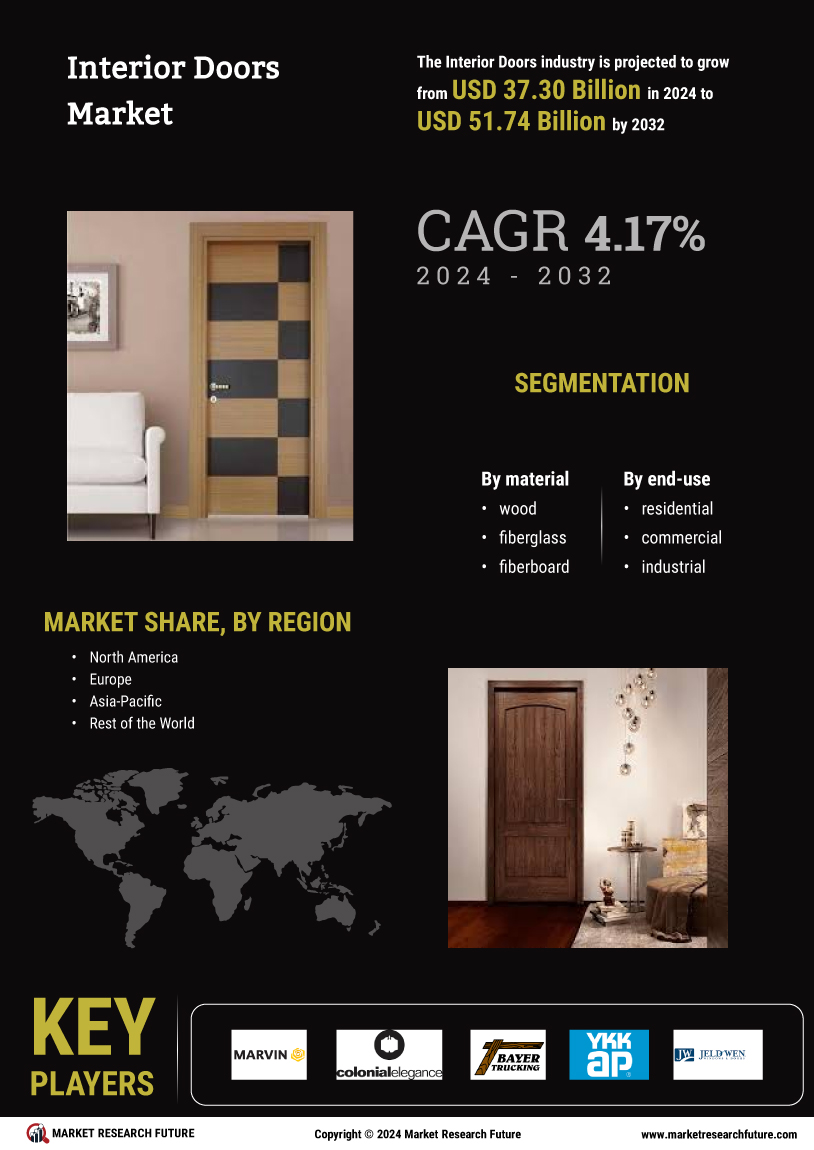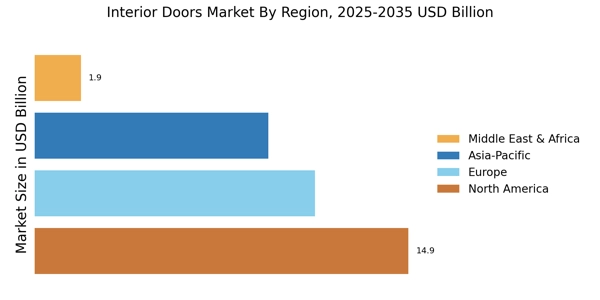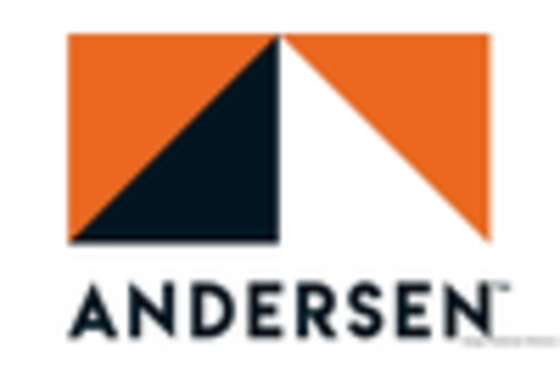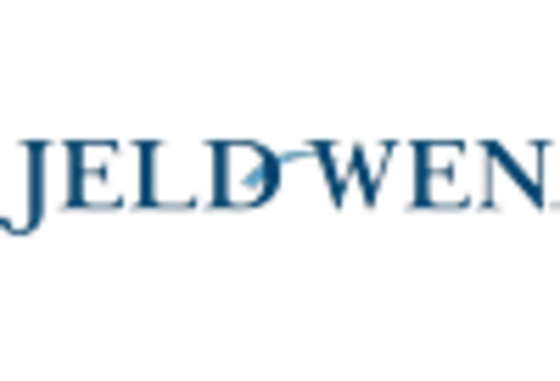Rising Construction Activities
The increasing number of construction activities across various sectors appears to be a primary driver for the Interior Doors Market. As urbanization continues to expand, the demand for residential and commercial buildings rises, leading to a heightened need for interior doors. In recent years, the construction sector has experienced a notable growth rate, with projections indicating a compound annual growth rate of approximately 4.5% through 2026. This growth is likely to stimulate the Interior Doors Market, as builders and developers seek to enhance the aesthetic and functional aspects of their projects. Furthermore, the trend towards open floor plans in modern architecture necessitates the use of interior doors to create defined spaces, thereby further propelling market demand.
Expansion of the Real Estate Sector
The expansion of the real estate sector is a crucial driver for the Interior Doors Market. As property development accelerates, there is a corresponding increase in the demand for interior doors in both residential and commercial properties. The real estate market has shown resilience, with new housing projects and commercial spaces being developed to accommodate growing populations. This trend is expected to continue, with forecasts suggesting a steady increase in real estate investments. Consequently, the Interior Doors Market stands to benefit from this expansion, as developers and contractors seek to source high-quality doors that meet the demands of modern architecture and design.
Increased Focus on Aesthetics and Design
The growing emphasis on aesthetics and interior design significantly influences the Interior Doors Market. Consumers are increasingly seeking doors that not only serve functional purposes but also enhance the overall visual appeal of their spaces. This trend is particularly evident in the residential sector, where homeowners are willing to invest in high-quality, stylish doors that reflect their personal tastes. Market data suggests that the demand for decorative and designer doors has surged, with a notable increase in sales of custom and premium products. As interior design trends evolve, the Interior Doors Market is likely to adapt, offering a wider variety of styles, finishes, and materials to meet consumer preferences.
Growing Demand for Energy-Efficient Solutions
The rising awareness of energy efficiency and sustainability is driving demand within the Interior Doors Market. Consumers are increasingly seeking products that contribute to energy conservation and reduce environmental impact. Interior doors that offer better insulation and energy-saving features are becoming more popular among homeowners and builders alike. Market analysis indicates that energy-efficient doors can significantly reduce heating and cooling costs, making them an attractive option for environmentally conscious consumers. As regulations regarding energy efficiency become more stringent, the Interior Doors Market is likely to see a shift towards products that meet these new standards, further boosting market growth.
Technological Advancements in Door Manufacturing
Technological innovations in door manufacturing processes are transforming the Interior Doors Market. The introduction of advanced materials and production techniques has led to the development of doors that are not only more durable but also energy-efficient. For instance, the use of composite materials and smart technology integration in door designs is becoming increasingly prevalent. These advancements not only enhance the functionality of interior doors but also contribute to sustainability efforts within the industry. As manufacturers continue to invest in research and development, the Interior Doors Market is expected to witness a surge in innovative products that cater to the evolving needs of consumers.


















Leave a Comment